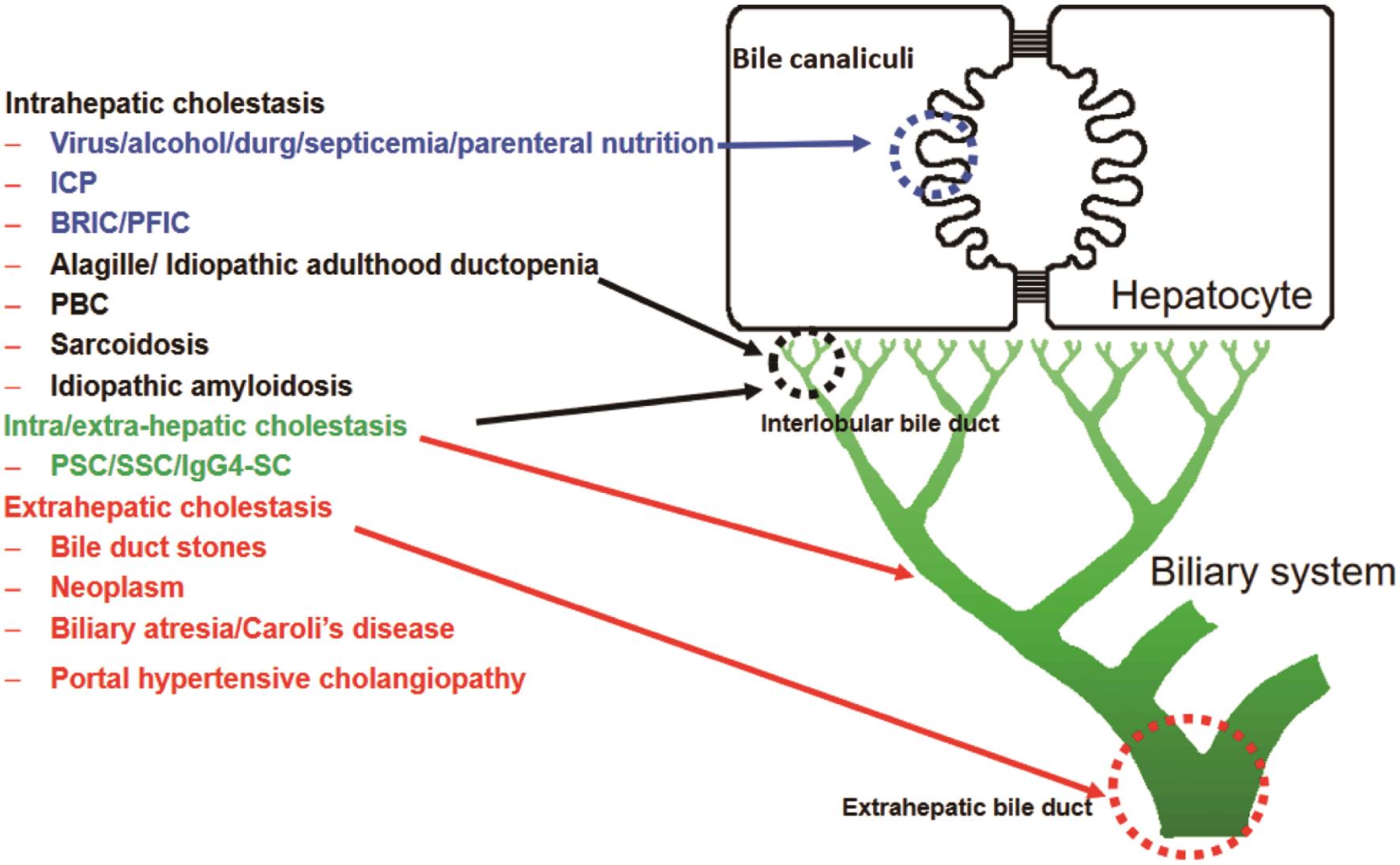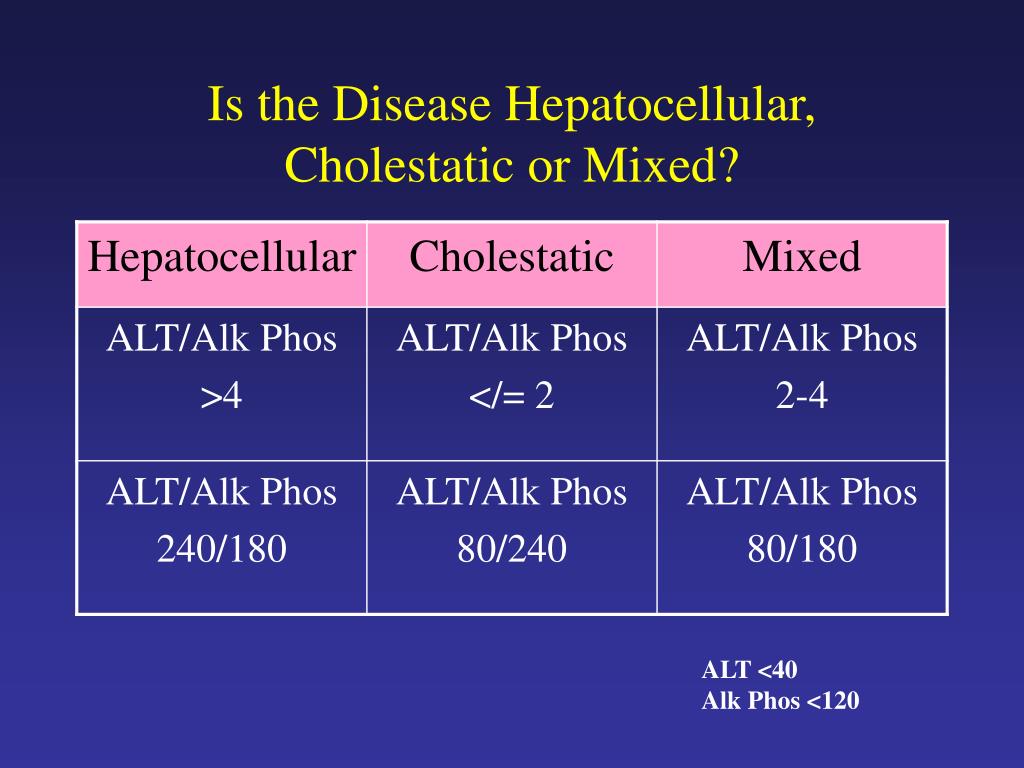Hepatocellular Vs Cholestatic Pattern
Hepatocellular Vs Cholestatic Pattern - The pattern of alt to alp rise can indicate whether the pathology is primarily cholestatic or hepatocellular: Differentiates cholestatic from hepatocellular liver injury, recommended by acg guidelines. Using a schematic approach that classifies enzyme alterations as predominantly hepatocellular or predominantly cholestatic, we review abnormal enzymatic activity within the. The three abnormal patterns that can be detected in liver function tests include the hepatocellular pattern, cholestatic pattern, and isolated hyperbilirubinemia pattern, each of. The actual function of the liver can be graded based on its ability to produce.
The three abnormal patterns that can be detected in liver function tests include the hepatocellular pattern, cholestatic pattern, and isolated hyperbilirubinemia pattern, each of. Differentiates cholestatic from hepatocellular liver injury, recommended by acg guidelines. The pattern of alt to alp rise can indicate whether the pathology is primarily cholestatic or hepatocellular: The actual function of the liver can be graded based on its ability to produce. Using a schematic approach that classifies enzyme alterations as predominantly hepatocellular or predominantly cholestatic, we review abnormal enzymatic activity within the.
Differentiates cholestatic from hepatocellular liver injury, recommended by acg guidelines. The actual function of the liver can be graded based on its ability to produce. Using a schematic approach that classifies enzyme alterations as predominantly hepatocellular or predominantly cholestatic, we review abnormal enzymatic activity within the. The three abnormal patterns that can be detected in liver function tests include the hepatocellular pattern, cholestatic pattern, and isolated hyperbilirubinemia pattern, each of. The pattern of alt to alp rise can indicate whether the pathology is primarily cholestatic or hepatocellular:
Cholestatic liver disease Video, Anatomy & Definition Osmosis
The actual function of the liver can be graded based on its ability to produce. Using a schematic approach that classifies enzyme alterations as predominantly hepatocellular or predominantly cholestatic, we review abnormal enzymatic activity within the. The three abnormal patterns that can be detected in liver function tests include the hepatocellular pattern, cholestatic pattern, and isolated hyperbilirubinemia pattern, each of..
to JCTH
The three abnormal patterns that can be detected in liver function tests include the hepatocellular pattern, cholestatic pattern, and isolated hyperbilirubinemia pattern, each of. The actual function of the liver can be graded based on its ability to produce. Using a schematic approach that classifies enzyme alterations as predominantly hepatocellular or predominantly cholestatic, we review abnormal enzymatic activity within the..
GI Physiology Resource 2 Problem Solving Exercises Discussion 9 11
The three abnormal patterns that can be detected in liver function tests include the hepatocellular pattern, cholestatic pattern, and isolated hyperbilirubinemia pattern, each of. Using a schematic approach that classifies enzyme alterations as predominantly hepatocellular or predominantly cholestatic, we review abnormal enzymatic activity within the. The actual function of the liver can be graded based on its ability to produce..
Liver Enzymes (hepatic vs cholestatic patterns) Sketchy Medicine
The actual function of the liver can be graded based on its ability to produce. Using a schematic approach that classifies enzyme alterations as predominantly hepatocellular or predominantly cholestatic, we review abnormal enzymatic activity within the. Differentiates cholestatic from hepatocellular liver injury, recommended by acg guidelines. The pattern of alt to alp rise can indicate whether the pathology is primarily.
PPT Liver Function Test s PowerPoint Presentation, free download ID
Differentiates cholestatic from hepatocellular liver injury, recommended by acg guidelines. Using a schematic approach that classifies enzyme alterations as predominantly hepatocellular or predominantly cholestatic, we review abnormal enzymatic activity within the. The pattern of alt to alp rise can indicate whether the pathology is primarily cholestatic or hepatocellular: The three abnormal patterns that can be detected in liver function tests.
Cholestatic liver diseases new targets, new therapies Priscila
Differentiates cholestatic from hepatocellular liver injury, recommended by acg guidelines. The actual function of the liver can be graded based on its ability to produce. The pattern of alt to alp rise can indicate whether the pathology is primarily cholestatic or hepatocellular: The three abnormal patterns that can be detected in liver function tests include the hepatocellular pattern, cholestatic pattern,.
Liver Failure Case
The actual function of the liver can be graded based on its ability to produce. The three abnormal patterns that can be detected in liver function tests include the hepatocellular pattern, cholestatic pattern, and isolated hyperbilirubinemia pattern, each of. Differentiates cholestatic from hepatocellular liver injury, recommended by acg guidelines. Using a schematic approach that classifies enzyme alterations as predominantly hepatocellular.
Liver function tests in primary care bpacnz
Using a schematic approach that classifies enzyme alterations as predominantly hepatocellular or predominantly cholestatic, we review abnormal enzymatic activity within the. The pattern of alt to alp rise can indicate whether the pathology is primarily cholestatic or hepatocellular: The three abnormal patterns that can be detected in liver function tests include the hepatocellular pattern, cholestatic pattern, and isolated hyperbilirubinemia pattern,.
A clearer and more visual pattern to diagnose and monitor druginduced
The actual function of the liver can be graded based on its ability to produce. The pattern of alt to alp rise can indicate whether the pathology is primarily cholestatic or hepatocellular: Using a schematic approach that classifies enzyme alterations as predominantly hepatocellular or predominantly cholestatic, we review abnormal enzymatic activity within the. Differentiates cholestatic from hepatocellular liver injury, recommended.
PPT Work up of the Asymptomatic Patient with Liver Enzyme
The actual function of the liver can be graded based on its ability to produce. The three abnormal patterns that can be detected in liver function tests include the hepatocellular pattern, cholestatic pattern, and isolated hyperbilirubinemia pattern, each of. The pattern of alt to alp rise can indicate whether the pathology is primarily cholestatic or hepatocellular: Using a schematic approach.
The Actual Function Of The Liver Can Be Graded Based On Its Ability To Produce.
Using a schematic approach that classifies enzyme alterations as predominantly hepatocellular or predominantly cholestatic, we review abnormal enzymatic activity within the. The three abnormal patterns that can be detected in liver function tests include the hepatocellular pattern, cholestatic pattern, and isolated hyperbilirubinemia pattern, each of. The pattern of alt to alp rise can indicate whether the pathology is primarily cholestatic or hepatocellular: Differentiates cholestatic from hepatocellular liver injury, recommended by acg guidelines.









